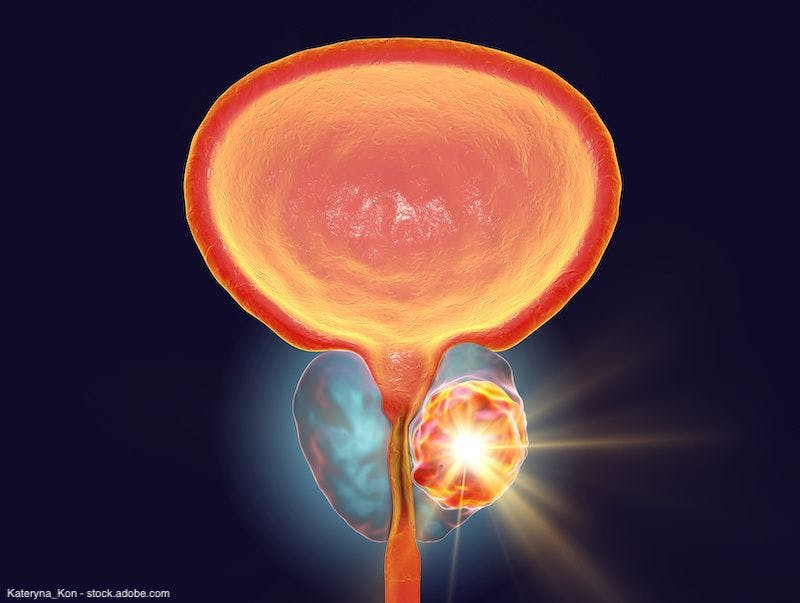Publication
Article
Urology Times Journal
Ongoing advances in the perioperative management of bladder cancer
Author(s):
The perioperative management of bladder cancer has undergone many shifts in recent years, particularly with the emergence of immunotherapy.
Jean Hoffman-Censits, MD

Chemotherapy has been the standard perioperative treatment for these patients. For example, in the pre-operative neoadjuvant setting, chemotherapy is used to address the challenge of clinical upstaging that commonly occurs when patients with bladder cancer go straight from diagnosis to surgery, explained Jean Hoffman-Censits, MD, during her presentation at the 15th Annual Interdisciplinary Prostate Cancer Congress® and Other Genitourinary Malignancies (NY GU).1
“I think the workflow in the United States is for eligible patients to be referred to medical oncology to have a discussion about neoadjuvant chemotherapy. The reason for that is that study after study has shown that preoperative cisplatin-based chemotherapy improves overall survival in eligible patients,” said Hoffman-Censits, co-director of the Women's Bladder Cancer Program at Sidney Kimmel Cancer Center at Johns Hopkins.
A key recent chemotherapy trial in the perioperative management of bladder cancer was the phase 3 VESPER trial,2 which assessed the efficacy of dose-dense methotrexate, vinblastine, doxorubicin, and cisplatin (dd-MVAC) versus gemcitabine plus cisplatin (GC) for either the neoadjuvant or adjuvant treatment of patients with muscle-invasive bladder cancer (MIBC). Complete dosing of dd-MVAC was 6 cycles and complete dosing of GC was 4 cycles.
Among patients receiving neoadjuvant treatment, 60% of the dd-MVAC arm received all 6 cycles and 84% of the GC arm received all 4 cycles. The percentages were 40% and 60%, respectively among patients receiving adjuvant therapy. Further, in the neoadjuvant group, 91% of the dd-MVAC arm and 90% of the GC arm went on to receive surgery.
“One thing that strikes us…is that most patients were able to complete chemotherapy and go on to surgery, which reinforces what we see in the clinic. The second [thing] is that if you look at the completion rates of chemotherapy in the neoadjuvant setting compared to the adjuvant setting, it again reinforces what we see in the clinic, that adjuvant therapy just does not seem to be as well tolerated,” said Hoffman-Censits, adding that survival data from the trial are not yet mature.
Neoadjuvant immunotherapy
Although the VESPER trial offers some fresh insight on chemotherapy, it was clear from Hoffman-Censits’s discussion that immunotherapy is pivotal to the future perioperative treatment paradigm in bladder cancer.
“There have been many clinical trials looking at immunotherapy in the neoadjuvant population, either in platinum-eligible or cisplatin-ineligible patients…and I think what’s kind of striking is that no matter what the study or what the regimen, the pathological complete response rate across the board is similar; so I think we’re seeing a common theme in terms of pathological outcomes to that preoperative treatment,” said Hoffman-Censits.
One of the focal areas in the neoadjuvant setting is the bladder-sparing paradigm, said Hoffman-Censits. As an example, she highlighted the phase 2 HCRN GU16-257 trial (NCT03558087), which explored the use of nivolumab plus gemcitabine and cisplatin in the neoadjuvant MIBC setting as an approach to avoiding cystectomy and salvaging the bladder.3
The study enrolled 76 patients with cisplatin-eligible cT2 to T4aN0M0 clinically localized bladder cancer. Patients initially received 4 cycles of gemcitabine plus cisplatin plus nivolumab. Following these 4 cycles, all patients underwent clinical restaging, including MRI/CT of the bladder (unless otherwise contraindicated), urine cytology, and cystoscopy with bladder/prostatic urethral biopsies. Patients with a clinical CR could then opt to proceed with cystectomy or proceed without cystectomy and instead receive an additional 4 months of single-agent nivolumab. For patients without a clinical CR, a cystectomy was recommended.
At the time of the data cutoff, 64 patients had completed clinical restaging. Of these patients, 31 (48%) achieved a clinical CR. Thirty of these patients chose not to undergo cystectomy and instead receive an additional 4 months of nivolumab monotherapy. Only 1 patient opted for immediate cystectomy.
“There are several ongoing clinical trials in this bladder-sparing paradigm, some of them are doing selection based on DNA damage and repair mechanisms, others are unselected, but I think there is more to come, with a change in paradigm,” said Hoffman-Censits.
Looking ahead, Hoffman-Censits said there are several noteworthy ongoing phase 3 neoadjuvant immunotherapy studies in bladder cancer, including the KEYNOTE-B15 trial of perioperative enfortumab vedotin (Padcev) plus pembrolizumab (Keytruda), the NIAGRA trial of durvalumab (Imfinzi) plus gemcitabine/cisplatin (NCT03732677), the KEYNOTE-866 trial of perioperative pembrolizumab plus neoadjuvant chemotherapy (NCT03924856), and a trial of perioperative nivolumab plus bempegaldesleukin (NCT04209114).
Adjuvant treatment for MIBC
In her presentation, Hoffman-Censits also highlighted research specifically focused on adjuvant immunotherapy. She discussed the CheckMate-274 study,4 which supported the 2021 FDA approval of adjuvant nivolumab for the treatment of patients with urothelial carcinoma who are at high risk of recurrence after undergoing radical resection, regardless of prior neoadjuvant chemotherapy, nodal involvement, or PD-L1 status.
The study randomized 709 patients with high-risk MIBC who had undergone radical surgery. Of these patients, 353 received nivolumab and 356 received placebo. The median disease-free survival (DFS) was 20.8 vs 10.8 months, respectively.
“What we saw in the intent-to-treat population was that nivolumab provided an improvement in disease-free survival at 6 and 12 months that was statistically significant over placebo,” said Hoffman-Censits. “And then, if you looked based on PD-L1 expression, that difference between treatment and placebo was even more striking. So, based on this intent-to-treat analysis, adjuvant nivolumab for selected high-risk patients who meet these criteria has now been guideline-endorsed.”
Hoffman-Censits also discussed the open-label phase 3 IMvigor010 study,5 which evaluated adjuvant atezolizumab (Tecentriq) in the same high-risk MIBC population. This study included 809 patients, of whom 406 were randomized to atezolizumab and 403 were randomized to observation. At a median follow-up of 21.9 months, the median DFS was 19.4 months with atezolizumab versus 16.6 months with observation. The difference was not statistically significant (HR, 0.89; P = .24).
“This was a negative study but very interesting was that in patients who had circulating tumor DNA and received adjuvant atezolizumab, those patients did have a benefit over those patients who were just observed alone,” said Hoffman-Censits. “So, based on this observation, a next clinical trial is ongoing (IMvigor011; NCT04660344) which is looking at atezolizumab vs placebo in high-risk MIBC patients with positive circulating tumor DNA after cystectomy.”
In another ongoing adjuvant immunotherapy trial, pembrolizumab is being explored in patients with MIBC and locally advanced bladder cancer in the phase AMBASSADOR study (NCT03244384).
References
1. Hoffman-Censits J. Management of Muscle-Invasive Bladder Cancer. Presented at: 15th Annual Interdisciplinary Prostate Cancer Congress® and Other Genitourinary Malignancies; New York, New York. March 11-12, 2022
2. Pfister C, Gravis G, Fléchon A, et al. Randomized phase III trial of dose-dense methotrexate, vinblastine, doxorubicin, and cisplatin, or gemcitabine and cisplatin as perioperative chemotherapy for patients with muscle-invasive bladder cancer. Analysis of the GETUG/AFU V05 VESPER trial secondary endpoints: Chemotherapy toxicity and pathological responses. Eur Urol. 2021 Feb;79(2):214-221. doi: 10.1016/j.eururo.2020.08.024. Epub 2020 Aug 28.
3. Galsky MD, Daneshmand S, Chan KG, et al. Phase 2 trial of gemcitabine, cisplatin, plus nivolumab with selective bladder sparing in patients with muscle- invasive bladder cancer (MIBC): HCRN GU 16-257. J Clin Oncol. 2021;39(suppl 15):4503. doi: 10.1200/JCO.2021.39.15_suppl.4503. Epub May 28, 2021.
4. Bajorin DF, Witjes JA, Gschwend JE, et al. Adjuvant nivolumab versus placebo in muscle-invasive urothelial carcinoma. June 3, 2021. N Eng J Med. 2021; 384:2102-2114. doi: 10.1056/NEJMoa2034442.
5. Bellmunt J, Hussain M, Gschwend JE, et al. Adjuvant atezolizumab versus observation in muscle-invasive urothelial carcinoma (IMvigor010): a multicentre, open-label, randomized, phase 3 trial. Lancet Oncol. 2021;22(4):525-537. Epub March 12, 2021.

Newsletter
Stay current with the latest urology news and practice-changing insights — sign up now for the essential updates every urologist needs.

























